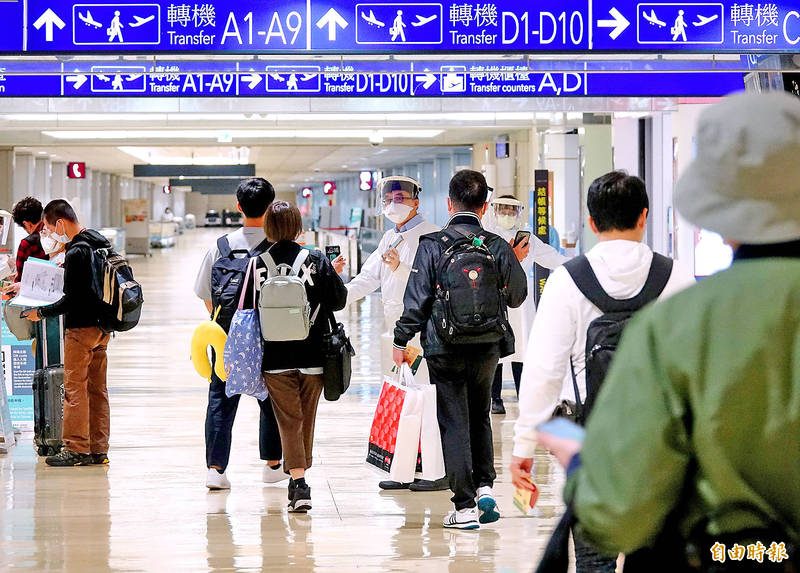《TAIPEI TIMES》 CECC finds BA.4, BA.5 subvariants in airport arrivals

Healthcare workers greet passengers arriving at Taiwan Taoyuan International Airport on May 27. Photo: Chu Pei-hsiung, Taipei Times
By Lee I-chia / Staff reporter
Taiwan’s first cases of the new Omicron subvariants BA.4 and BA.5 of SARS-CoV-2 have been detected in five people arriving from overseas, the Central Epidemic Command Center (CECC) said yesterday.
Centers for Disease Control Deputy Director-General Philip Lo (羅一鈞), who is deputy head of the CECC’s medical response division, said genome sequencing conducted on virus samples from 57 imported cases last week showed that four people were infected with the BA.5 subvariant, one with the BA.4 subvariant and the rest with the BA.2 subvariant.
While the new subvariants account for a small proportion of total imported cases, they have not been found in local cases, he added.
The four cases of the BA.5 subvariant were found in people who arrived from the US, Turkey and Poland, while the BA.4 subvariant was found in a traveler who arrived from Chile, Lo said.
The people with BA.5 infections are asymptomatic or have mild COVID-19 symptoms, with one reporting a sore throat and another an abnormal sense of taste, he said.
Health authorities in South Africa first detected the BA.4 and BA.5 subvariants in January and February respectively, Lo said, adding that they triggered a new wave of COVID-19 infections in that country in April and May.
Studies have shown that the two subvariants are more easily transmitted than previous Omicron subvariants and have a degree of “immune escape” — the ability to evade immune protection in the body induced by previous infection or vaccination, he said.
WHO data released on Wednesday last week showed that the BA.4 and BA.5 subvariants have been reported in more than 40 countries, he said.
“Based on current studies, there is no indication that the Omicron BA.4 and BA.5 subvariants cause a higher risk of severe cases, but they are more contagious and capable of escaping immune protection,” he said, adding that the center is closely monitoring any changes in COVID-19 detected in imported cases, while increasing vaccination rates.
The risk of being reinfected with the same strain of SARS-CoV-2 is relatively low, but not impossible, Lo said, adding that if the BA.4 and BA.5 subvariants become the primary circulating viruses in the local community, the risk of reinfection could rise.
Experts agree that a person’s immune protection from a previous COVID-19 infection can last about three months, but a few people might still contract the disease again, he said.
Asked whether “herd immunity” would be effective against the BA.4 and BA.5 subvariants, Lo said that the local outbreak is mainly caused by the BA.2 subvariant, with antibodies protecting against the BA.1 and BA.2 subvariants for at least three to four months.
Over the weekend, he said the BA.1 subvariant has not been recorded locally since April 21.
新聞來源:TAIPEI TIMES













